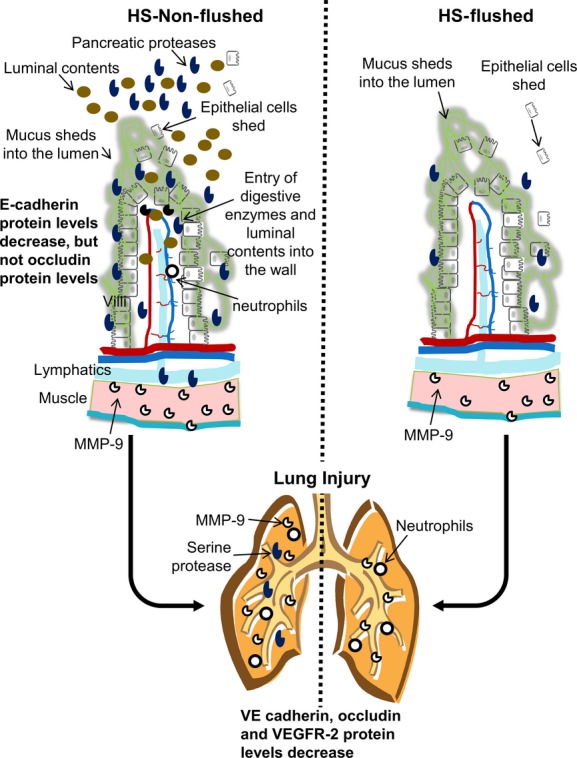Figure 7.

Summary. During hemorrhagic shock, intestinal epithelial cells shed into the lumen and the mucus breaks apart. If the intestine is not flushed, this allows digestive enzymes to penetrate into the wall and attract neutrophils. Digestive enzymes can transport from the intestine to peripheral organs through the lymph or portal venous fluid and accumulate in organs, such as the lung. In the absence of luminal contents, there is minimal destruction of the endothelial basement membranes reducing intestinal lesion formations as no luminal contents enter into the villi.
